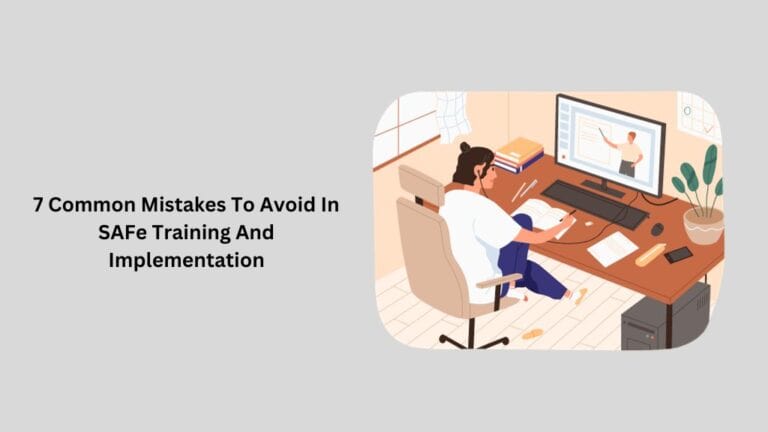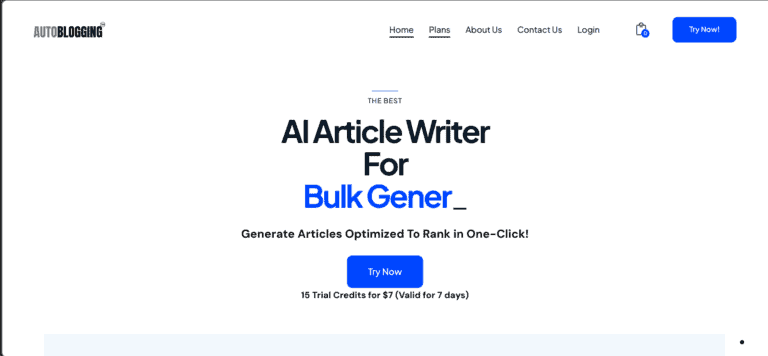What is SEO? Everything you Need to Know in 2024
SEO, or search engine optimization, is a crucial aspect of digital marketing that can significantly impact the visibility and success of a website.
This article covers everything you need to know about SEO, from understanding its purpose and importance to delving into key components and best practices.
Whether you are a beginner looking to learn the basics or an experienced marketer wanting to enhance your strategies, this article provides valuable insights and tips to improve your SEO efforts.
Key Takeaways:
SEO stands for Search Engine Optimization, it is the process of optimizing a website to improve its visibility and ranking on search engine results pages.SEO is important because it helps businesses attract and convert potential customers, increase website traffic, and improve their overall online presence.Some key components of SEO include keyword research, content creation, link building, mobile optimization, and user experience. These elements work together to improve a website’s ranking and visibility on search engines.
What Is SEO?
According to Mukul, SEO, which stands for search engine optimization, is the practice of optimizing content on a website to increase visibility and rankings on search engines like Google.
Search engine optimization involves various techniques such as keyword research, on-page optimization, link building, and technical improvements to enhance a website’s relevance and authority in the eyes of search engines.
Achieving a higher ranking on Google’s search engine results page (SERP) is crucial for driving organic traffic to a website and ultimately increasing its online visibility. By understanding Google’s search algorithms and implementing SEO best practices, websites can attract more targeted visitors and improve their online presence.
What Does SEO Stand For?
SEO stands for search engine optimization, a strategic approach to enhancing a website’s visibility in search engine results.
SEO involves optimizing various elements on a website, such as content, meta tags, and images, to make it more attractive to search engines like Google, Bing, and Yahoo. By incorporating relevant keywords and phrases into the website’s content, SEO helps search engines understand the site’s purpose and content better. This, in turn, increases the chances of the website being displayed prominently in search engine results pages (SERPs), driving organic traffic to the site. Implementing effective SEO practices can lead to improved website rankings and ultimately, increased visibility and credibility online.
Why Is SEO Important?
SEO is crucial for websites to attract online traffic, increase visibility on search engines like Google, and establish credibility among online publishers.
With the ever-evolving digital landscape, having a solid SEO strategy can be the difference between a successful or stagnant online presence. By optimizing website content, meta tags, and backend structure, a site can rank higher on search engines, making it more likely to be noticed by potential visitors. Visibility in search results can significantly impact the amount of organic traffic a website receives. This not only boosts the chances of converting visitors into customers but also helps in creating a loyal online following.
What Is the Purpose of SEO?
The primary purpose of SEO is to make a website more accessible and appealing to searchers, thereby driving organic traffic and improving the site’s visibility.
By optimizing a website’s content, structure, and HTML coding, SEO aims to enhance its ranking in search engine results pages. This process involves keyword research, meta tag optimization, and link building strategies to boost online visibility.
SEO helps in aligning a website’s offerings with the needs and interests of potential visitors, ensuring that the right audience discovers the site through relevant search queries.
What Are the Benefits of SEO?
SEO offers various benefits such as higher rankings in organic search results, increased website visitors, and improved conversion rates for businesses.
Implementing SEO strategies can significantly boost a website’s visibility online, ensuring that it appears prominently in search engine results. By targeting relevant keywords and optimizing content, businesses can attract more organic search traffic, reaching a wider audience interested in their products or services. As a result, the website gains credibility and trust, leading to more quality leads and conversions. SEO investments can have long-term effects, providing a sustainable source of traffic and helping companies stay competitive in the digital landscape.
How Does SEO Work?
SEO works by search engines using crawlers to index web pages, analyze content relevance to search queries, and rank them based on various factors.
When crawlers visit a website, they scan for information that helps search engines understand the content. By analyzing keywords, meta information, and overall relevance, crawlers create indexes that store and organize this data efficiently. This process allows search engines to match users’ search queries with the most relevant web pages. Rankings then consider factors like quality of content, backlinks, and user experience to provide users with the best possible results for their queries.
What Are the Key Components of SEO?
The key components of SEO include on-page SEO focusing on content optimization, off-page SEO emphasizing link building, and technical SEO addressing website infrastructure and performance.
On-page SEO plays a crucial role in creating high-quality, relevant content that appeals to both users and search engines. By utilizing keywords strategically within the content, meta tags, and headers, websites can improve their search engine visibility and ranking.
Off-page SEO involves building reputable links from external sites, which signals authority and trust to search engines, boosting organic traffic.
Technical SEO involves optimizing website architecture, ensuring fast loading times, mobile-friendliness, and proper indexing by search engine crawlers.
What Are the Different Types of SEO?
SEO encompasses different types including on-page SEO focusing on content optimization, off-page SEO emphasizing link building, and technical SEO addressing website infrastructure.
On-page SEO involves optimizing various elements within a webpage to enhance search engine ranking and increase organic traffic. This includes optimizing meta tags, headings, and keyword placement to make the content more accessible to search engine crawlers.
Off-page SEO, on the other hand, focuses on building high-quality backlinks and improving the site’s authority through external sources. It’s essential for establishing credibility and trust with search engines.
Technical SEO concentrates on optimizing site architecture, speed, and mobile responsiveness for better crawling and indexing. Each type plays a vital role in improving a website’s overall performance and visibility.
On-Page SEO
On-Page SEO involves optimizing web pages with relevant keywords, high-quality content, and proper HTML tags to climb up the SERPs.
Regarding on-page SEO, the strategic placement of keywords is crucial in signaling to search engines what the page is about. Ensuring that the content is informative, engaging, and original not only enhances user experience but also boosts SEO performance. Incorporating HTML tags such as header tags, meta descriptions, and image alt text further optimizes the page for search engines, making it easier for them to crawl and index the content effectively.
Off-Page SEO
Off-Page SEO focuses on building quality backlinks, enhancing domain authority, and improving the website’s reputation through external sources.
One of the key strategies in off-page SEO is link building, which involves acquiring links from other websites to your own site. These links act as votes of confidence and credibility, indicating to search engines that your website is a valuable resource. By consistently creating high-quality content that others want to link to, you can increase your website’s visibility and organic traffic. Guest posting on reputable websites and participating in online communities can help establish your website as an authoritative source in your industry.
Technical SEO
Technical SEO deals with optimizing website infrastructure, ensuring site speed, mobile friendliness, and proper indexability for better search engine visibility.
Regarding website infrastructure, it’s crucial to have clean code, crawlable URLs, and a well-structured hierarchy for optimal Technical SEO.
Optimizing site speed by minimizing server response time, leveraging browser caching, and compressing images can significantly impact user experience and search engine rankings.
Ensuring mobile friendliness through responsive design and improving indexability by creating an XML sitemap and robots.txt file are essential components of a successful Technical SEO strategy.
What Are the Best Practices for SEO?
Best SEO practices include thorough keyword research, high-quality content creation, and strategic link building to enhance website visibility and search engine rankings.
In-depth keyword research is the cornerstone of any successful SEO strategy. By identifying the most relevant and high-traffic keywords for your industry, you can tailor your content to target these specific terms, increasing the likelihood of ranking well in search engine results pages.
Creating valuable and engaging content that incorporates these keywords naturally can help establish your website as an authoritative source in your niche, further boosting its visibility and credibility.
Building a strong network of quality backlinks from reputable websites can signal to search engines that your site is trustworthy and deserving of a higher ranking position. By implementing these three fundamental tactics effectively, you can significantly improve your website’s performance and climb the search engine rankings.
Keyword Research
Keyword research is a critical SEO practice that involves identifying search terms, analyzing search intent, and selecting relevant keywords to target for optimization.
Understanding the importance of keyword research can make a significant difference in the success of your online content. By diving into what your target audience is searching for, you can tailor your content to meet their needs more effectively. Utilizing tools like Google Keyword Planner, SEMrush, or Ahrefs can help you uncover high-volume keywords that align with your content objectives. Furthermore, analyzing user intent behind these keywords is key; are users looking for information, making a purchase, or seeking a specific service? By considering this, you can create content that not only ranks well but also resonates with your audience.
Content Creation
Content creation in SEO focuses on producing high-quality, relevant content that aligns with E-A-T signals (Expertise, Authoritativeness, Trustworthiness) to enhance credibility and user engagement.
Creating valuable content not only attracts the right audience but also builds a strong foundation for a successful SEO strategy. By incorporating targeted keywords strategically within well-researched articles or blogs, websites can improve their ranking on search engine results pages. This practice not only helps in driving organic traffic but also establishes the website’s authority in its niche.
Focusing on E-A-T signals is crucial for gaining the trust of both users and search engines. If the content is perceived as reliable, accurate, and authoritative, it is more likely to be favored by search algorithms, ultimately leading to higher visibility and improved rankings.
Link Building
Link building is an essential SEO practice that involves acquiring quality backlinks from reputable sources to improve domain authority and increase website visibility.
By building a network of diverse backlinks, a website gains credibility in the eyes of search engines, ultimately leading to higher rankings in search results. A well-thought-out link building strategy involves creating valuable content that naturally attracts links from other websites, reaching out to industry influencers for collaborations, and submitting guest posts to authoritative blogs to earn backlinks. With the right mix of internal linking and external backlinks, a website can strengthen its online presence and establish itself as a trustworthy source of information within its niche.
Mobile Optimization
Mobile optimization in SEO focuses on enhancing website performance on mobile devices, ensuring mobile-friendly design, and providing a seamless user experience for mobile visitors.
Ensuring that your website is optimized for mobile devices is crucial in today’s digital landscape, where a significant portion of web traffic comes from mobile users. Implementing responsive design principles can help improve website responsiveness and ensure that your content is easy to access and navigate on smaller screens.
Mobile SEO plays a vital role in determining your site’s ranking on search engine results pages, making it essential to prioritize mobile optimization strategies. By creating a mobile-friendly layout, optimizing loading times, and simplifying navigation, you can enhance user experience and encourage mobile visitors to engage more with your content.
User Experience
User experience plays a crucial role in SEO, emphasizing website usability, navigation, and overall user-friendly design to enhance visitor satisfaction and engagement.
When a website is easy to navigate and intuitive to use, visitors are more likely to stay longer, explore more pages, and ultimately convert into customers or leads. Investing in a smooth user experience not only benefits your SEO efforts but also builds credibility and trust with your audience. User experience extends beyond just the visual aspect of a website—it encompasses how easily users can find information, complete tasks, and interact with the site. By optimizing for user experience and usability, you create a positive online environment that keeps visitors coming back for more.
How Can You Measure the Success of SEO?
Measuring SEO success involves tracking keyword rankings, analyzing organic traffic metrics, monitoring conversion rates, and assessing the return on investment (ROI) from SEO efforts.
One crucial method to measure SEO success is through keyword rank monitoring. This involves regularly checking the position of your targeted keywords in search engine results pages. Additionally, organic traffic analysis plays a significant role in evaluating SEO performance. By examining the traffic coming to your website from organic search sources, you can gauge the effectiveness of your optimization strategies.
Another essential aspect is conversion rate tracking. This entails monitoring the percentage of website visitors who take a desired action, such as making a purchase or signing up for a newsletter. By understanding how well your SEO efforts are converting visitors, you can make informed decisions to optimize your conversion funnel.
Furthermore, ROI evaluation is vital in determining the overall impact of your SEO activities. Calculating the return on investment helps you quantify the benefits gained from your SEO initiatives, ensuring that you are maximizing your resources effectively.
Keyword Rankings
Keyword rankings are a key metric in SEO, reflecting a website’s position on search engine results pages (SERPs) for specific search queries.
Search engines prioritize websites that have high keyword rankings, bringing them increased visibility to potential visitors.
Higher rankings lead to more organic traffic, as users tend to click on websites listed towards the top of the search results.
Regularly monitoring and improving keyword rankings can help businesses stay ahead of competitors and reach their target audience more effectively.
Organic Traffic
Organic traffic refers to the visitors driven to a website through unpaid, organic search results on search engines, reflecting the site’s visibility and relevance to search queries.
This type of traffic is highly valuable for website owners and businesses as it indicates that users are finding their site naturally through search engines, without the need for paid advertising. Organic traffic is seen as more sustainable in the long run compared to paid traffic, as it shows a website’s credibility and authority to search engines. By optimizing content with relevant keywords, meta tags, and quality backlinks, websites can improve their ranking in search engine results, leading to an increase in website visitors through organic channels.
Conversion Rates
Conversion rates in SEO indicate the percentage of website visitors who take desired actions, such as making a purchase or submitting a form, reflecting the effectiveness of SEO strategies.
The significance of conversion rates in the realm of Search Engine Optimization (SEO) cannot be understated. These rates serve as crucial metrics that provide insights into how well a website is performing in terms of turning website traffic into valuable actions. By tracking conversion rates, businesses can assess the impact of their SEO efforts and make informed decisions to enhance their online presence further.
Return on Investment (ROI)
Return on Investment (ROI) in SEO quantifies the profitability of SEO campaigns by analyzing the relationship between investment costs, generated traffic, and conversions.
Understanding ROI in SEO is essential for businesses to assess the effectiveness of their online marketing strategies. It provides a clear picture of how much revenue is being generated in relation to the amount spent on SEO efforts. By tracking conversions, which are actions taken by visitors that result in a desired outcome, such as purchases or sign-ups, businesses can measure the success of their SEO campaigns. This data helps in making informed decisions on where to allocate resources and which strategies to prioritize for maximum impact on profitability.
What Are Some Common SEO Mistakes to Avoid?
Avoiding common SEO mistakes such as keyword stuffing, duplicate content, poor user experience, neglecting mobile optimization, and ignoring analytics and data analysis is essential for effective SEO strategies.
Keyword stuffing, in particular, can harm your website’s rankings as search engines penalize sites that overly repeat keywords in their content.
Duplicate content issues can confuse search engines and divide the ranking ability between multiple versions of the same content.
Ensuring a seamless user experience is crucial for keeping visitors engaged and improving bounce rates, factors that search engines consider when ranking websites.
Mobile optimization is vital in today’s digital landscape, as more searches are done on mobile devices than ever before.
Keyword Stuffing
Keyword stuffing, the excessive use of keywords in content, can lead to search engine penalties and degrade the user experience, impacting the site’s SEO performance negatively.
When a website engages in keyword stuffing, it often disrupts the natural flow of the content, making it appear spammy and illegible to the reader. Search engine algorithms are designed to detect these practices, and as a result, the website may face penalties such as lowered search rankings or even complete removal from search results.
From a user perspective, encountering content filled with an overwhelming number of keywords can be off-putting and frustrating. Instead of finding valuable information, visitors may be bombarded with irrelevant text that adds no real value to their browsing experience.
Duplicate Content
Duplicate content issues can harm a website’s authority, confuse search engines, and negatively impact organic search rankings, making it essential to address such content duplication.
Duplicate content issues not only dilute the credibility of a website but can also result in search engines penalizing the site for lack of originality. When search engines encounter duplicate content, they struggle to determine which version to rank, ultimately leading to a decrease in visibility and traffic.
Moreover, duplicate content can also result in a lower crawl rate for a website, hampering the search engine’s ability to index new pages efficiently. This can further deteriorate the overall performance and organic search rankings of the site, affecting its online visibility and audience reach.
Poor User Experience
Poor user experience, characterized by high bounce rates and low engagement metrics, can adversely affect a website’s SEO performance by diminishing user satisfaction and interaction.
When users visit a website and find it difficult to navigate or slow to load, they are more likely to leave quickly, leading to high bounce rates. This not only indicates to search engines that the content may not be relevant or useful, but it also hampers the site’s potential to rank higher in search results. Low engagement metrics such as short session durations and few page views signal to search engines that visitors are not finding value in the site, further hurting SEO efforts. This lack of user satisfaction ultimately translates to poor performance in search engine rankings.
Neglecting Mobile Optimization
Neglecting mobile optimization, such as lacking responsive design and mobile-friendly interfaces, can lead to reduced search visibility and diminished user experience on mobile devices.
When a website is not optimized for mobile, it may rank lower in search engine results, as search engines prioritize mobile-friendly websites when users search on mobile devices. A non-responsive site on mobile can lead to slow loading times and poor navigation, frustrating users and increasing bounce rates.
Ignoring Analytics and Data
Ignoring analytics and data analysis in SEO practices can hinder performance tracking, hinder strategy refinement, and limit insights into website optimization opportunities.
Utilizing analytics and data analysis is crucial for understanding how your website performs in the digital landscape. By diving into the numbers, you gain valuable insights into user behavior, keyword effectiveness, and content performance. This information serves as a compass guiding you towards making informed decisions for enhancing your SEO strategies.
Analyzing data allows you to identify trends, understand your target audience better, and fine-tune your content to meet their needs. Performance tracking provides a roadmap for measuring the success of your SEO efforts, highlighting areas of improvement, and enabling you to optimize your website for better visibility and engagement.
Frequently Asked Questions
What is SEO and why is it important?
SEO stands for Search Engine Optimization, which is the process of optimizing a website in order to increase its visibility and ranking on search engine results pages. It is important because a higher ranking on search engines can lead to increased website traffic and potential customers.
How does SEO work?
SEO works by using various techniques to improve a website’s relevance and authority in the eyes of search engines. This includes optimizing keywords, creating high-quality content, building backlinks, and following search engine guidelines.
Is SEO the same as paid advertising?
No, SEO is different from paid advertising. While paid advertising requires payment for ad placement, SEO involves organic methods to improve a website’s ranking on search engines.
What are some common SEO techniques?
Some common SEO techniques include keyword research, on-page optimization, link building, and content marketing. These methods help search engines understand and improve the relevance of a website’s content.
Can I do SEO on my own or do I need a professional?
It is possible to do SEO on your own, but it can be a complex and time-consuming process. Hiring a professional SEO company or specialist can help ensure that your website is properly optimized and can save you time and effort.
How long does it take to see results from SEO?
The time it takes to see results from SEO can vary, as it depends on various factors such as the competitiveness of your industry and the quality of your SEO efforts. Generally, it can take several months to see significant improvements in your website’s ranking and traffic.





